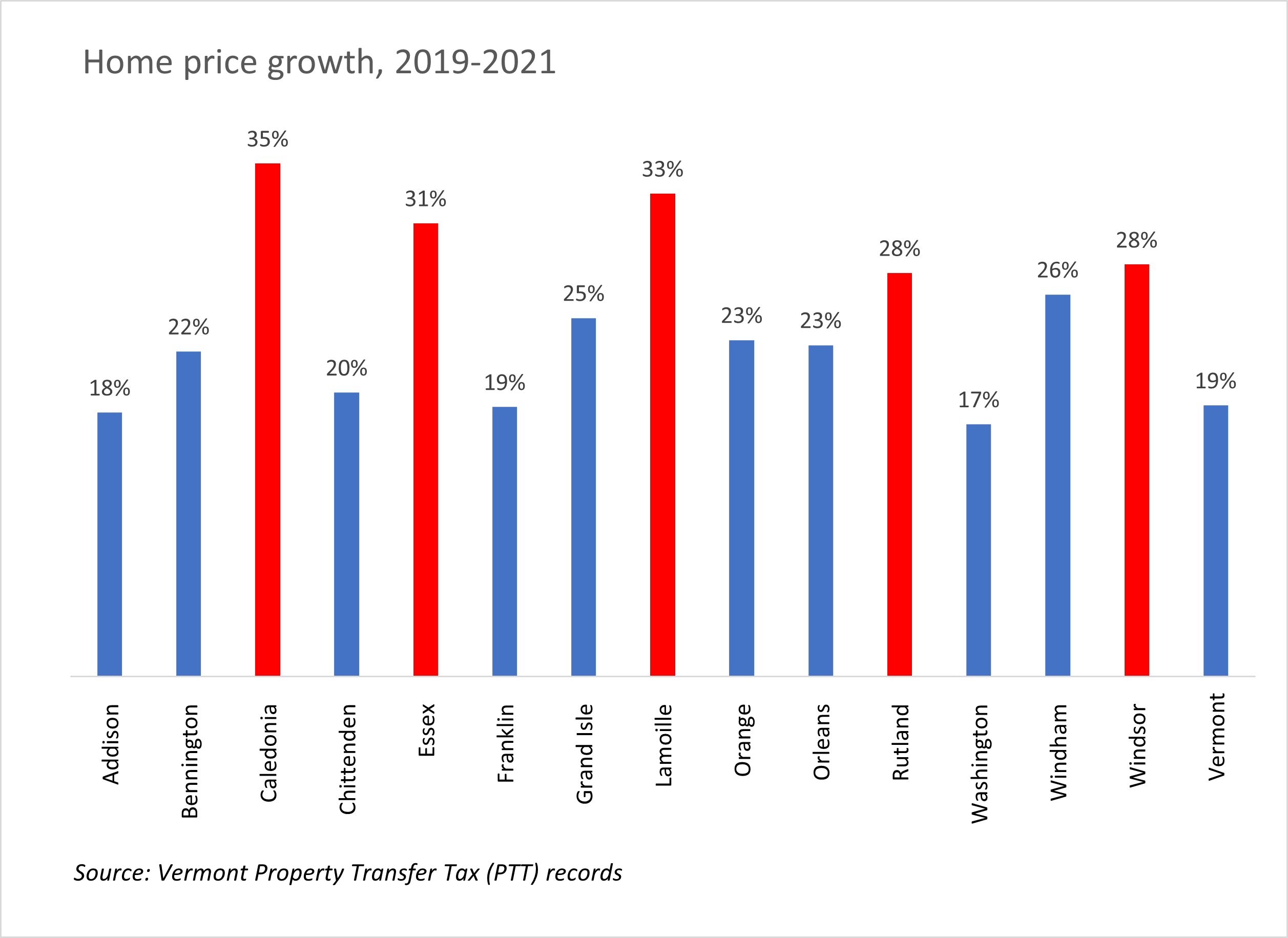
The median Vermont non-vacation home sold for $270,000 in 2021, a 10.2% increase from the prior year, and a 19% overall increase from prices in 2019, before the pandemic. This is the largest home price increase seen since 2005.
The median single family primary home sold for $280,000, the median condominium sold for $247,250 and the median mobile home with land sold for $115,000, according to Property Transfer Tax (PTT) records from the Vermont Department of Taxes*.
Caledonia and Essex Counties have seen unusually high price growth during the pandemic (35% and 31%, respectively), although the Northeast Kingdom still has lower median home prices than much of the rest of the state. Meanwhile, although Chittenden County experienced smaller price growth than most other counties, it still has by far the highest home prices, with the median primary home selling for $385,000 in 2021.

Vermont home price growth has been especially notable in resort areas, in towns like Stowe, Dover and Ludlow. Although those areas already had high home prices relative to the rest of their counties, they experienced particularly large increases during the pandemic, which may be related to increased demand from second homebuyers. However, there is also new growth in prices in towns that had been previously more affordable, including Barre City, which could be due to home buyers looking further from jobs centers than they might have in previous years due to higher prices.
Many recent media reports have debated the cause of Vermont’s rapidly growing home prices. Although the pandemic and out of state migration to Vermont have likely been factors, Vermont’s housing market was heating up before then. Median home sale prices jumped 5.8 percent from 2018 to 2019, up from the 2-3 percent annual increases in the prior four years. In addition, median home prices nationwide grew even more quickly than Vermont’s during the pandemic, increasing by about 25% since 2019. Taken together, these indicators could point to demand-inducing factors beyond the pandemic, including very low mortgage interest rates and the millennial generation’s entrance into the homebuying market.
Regardless of these proximate causes, Vermont’s high housing prices are driven in large part by a shortage of homes available to buyers. During the summer of 2021, the for-sale home inventory was roughly 47% lower than during the same period in 2019. Similarly, the median length of time that Vermont homes were listed on the market dropped to 69 days, the lowest point since this data became available. Fewer homes available increases competition among buyers, driving up prices.
Without increasing home building or other measures to mitigate rising costs, it remains difficult to see an end to Vermont’s housing crisis. While industry experts predict slightly less demand from home buyers in 2022 due to higher interest rates and an increasing return to pre-pandemic living patterns, Vermont prices will likely remain high. During the last recession, Vermont median home prices decreased by just 5% before regaining their full value within less than five years in most areas. Although home prices may be inflated, a decades-long low rate of home production and slow wage growth is likely to keep supply low and prices elevated beyond what the average Vermont household can afford.
Policy makers including Vermont Housing Finance Agency (VHFA) are exploring new ways to help ensure that low and moderate income Vermonters have an opportunity to become homeowners. In addition to its affordable mortgage and down payment assistance programs, VHFA and partners have proposed a program to help increase production of modest new homes affordable for middle income buyers. The program was included in the Governor’s budget for FY23 and is currently under consideration by the Legislature.
*VHFA intends to update home sale volume and prices on housingdata.org in April to account for any delays in sales reported to the Vermont Department of Taxes through the end of 2021.

